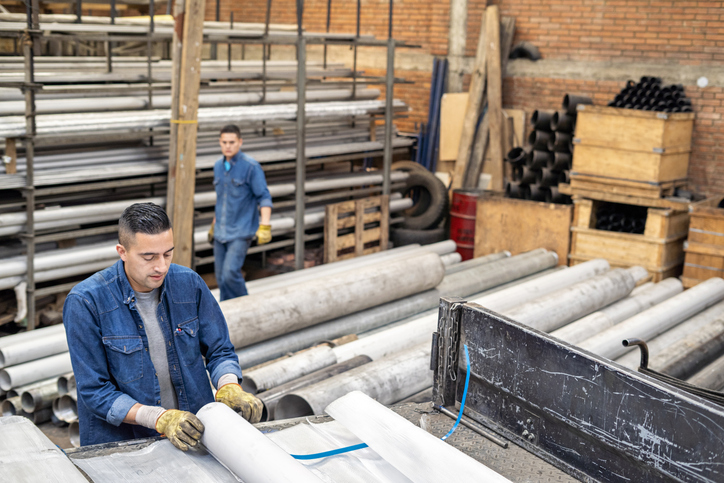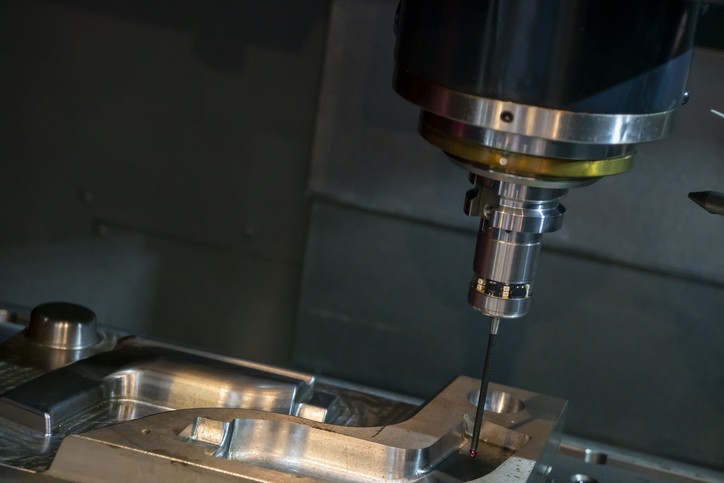Vertical and horizontal milling machines are growing in popularity as the demand for these mills is at an all-time high. And, it doesn’t seem to be slowing down anytime soon.
These robust machines are utilized for many tasks during the manufacturing process and are a vital tool used in the engineering industry. We’re going to take a look at what milling is, the different types of milling machines available on the market, and why you may need one.
So, What Is Milling?
Milling is a technique used to remove unwanted metal and materials from a workpiece. It accomplishes this by using a rotary cutter. Traditional milling machines have a motor-driven revolving spindle.
The spindle is mounted on top of the worktable and moves along one or two axes and has a variety of speed settings. It has blocks, vices, or chucks that will hold the item that needs cutting in place. There may be a power feed installed on the worktable depending on the mill type.
Most milling machines fall into one of two categories, vertical or horizontal. It all depends on the rotation of the spindle and the types of milling you’re needing to perform.
Vertical and horizontal milling machines perform similar tasks, but the process will differ. Both types have pros and cons and each is better suited to specific tasks.
The following is a simple comparison between both horizontal and vertical mills. We’ll begin with the vertical milling machine.
What Is a Vertical Milling Machine and How Does It Work?
The most common type of milling machine is a vertical milling machine. It’s called that because it has a vertical cutting head or spindle.
A rotating cutting tool is held against the workpiece by the spindle. The spindle will move in a vertical direction along the Y-axis.
Vertical mills are perfect for jobs that have one side that needs working on, such as sectioning or finishing, as with end millwork.
Benefits of the Vertical Milling Machine
There are several benefits of the vertical mill that make it a good choice for many individuals. Let’s check them out:
It’s Popular
Vertical mills, also known as knee mills, account for most of the milling equipment in the country. In metalworking vertical mills often don’t cost as much as the heavier milling machines.
Production parts manufactured on knee mills can cost less. This is because of the minimal upfront investment. These mills are the most used in machine shops across the country, so skilled operators are easier to come by.
It’s Easy to Use
Vertical mills have construction that provides operators with better visibility while they work. This increases the operator’s chance of discovering and fixing possible issues.
Digital readouts and CNC controls (computer numerical controlled) make tracking the position of the workpiece even easier. And, programming CNC mills are simple thanks to the popular use of G-code.
It’s Flexible
Vertical mills are perfect for smaller manufacturing projects because of their versatility. Vertical mills are ideal for prototyping, custom jobs, or special-order product lines that need high precision.
What Is a Horizontal Milling Machine and How Does it Work?
Horizontal milling machines, like vertical milling machines, have a rotating spindle. The spindle is above the bed in a horizontal position. The cutting tool, which is usually a disc that looks like a saw blade, travels along the length of the spindle.
The horizontal mill can remove material from the workpiece and act as a planing tool. The horizontal mill, when combined with a rotating table, becomes almost as versatile as a vertical mill. This is great for those needing options without having to shell out the big bucks for both.
Benefits of the Horizontal Milling Machine
Just as with vertical milling machines, the horizontal milling machine holds its number of selling points. For some buyers this is the best choice. Let’s find out why:
It Makes Deeper and Heavier Cuts
Horizontal milling machines can cut deeper than vertical milling machines. Most often, horizontal mills have more horsepower and wider beds. This makes them excellent for heavy-duty jobs.
Many manufacturing companies use these machines to make cuts like slots or grooves. They’re also capable of milling tasks when positioned at various angles.
It Evacuates the Chips
Gravity helps pull the chips out of the horizontal mill during cutting. This is due to the horizontal mill’s layout. Cleaner surface finishes and less work are the results of improved chip evacuation.
It’s More Solid in Construction
Horizontal mills are most often used for big production projects in heavy industrial environments due to their construction. A stronger structure means the machine will vibrate less, and operate more smoothly than vertical mills.
It’s More Efficient in Productivity
Many horizontal mills are ideal for big volumes and difficult workloads. This is due to the integrated pallet changers, options for spindle speeds, and heavy-duty jigs.
Horizontal mills also give more stability, durability, and power. Horizontal milling machines are preferred among many in metalworking because one of these machines has the ability to perform the amount of work that would take more than one vertical mill.
A Recap of What Milling Machines Do and a Comparison of Both
As you can see, milling machines have a variety of uses. They come in several sizes, from small ones that can be used in homes or garages to larger ones that need warehouse space to operate.
Milling machines use a variety of tools to cut or drill into raw materials in order to create shapes and finished products. They can drill, thread bolts, and build precise forms out of any material.
The Horizontal vs Vertical Milling Machine Showdown
Both types of milling machines have their advantages and disadvantages. The decision you will make between the two depends on the type of milling you need. The number of planes which a component needs milling, and the shape and size of the piece, are all important things to consider when deciding whether vertical or horizontal milling is best for you.
Horizontal milling is excellent for larger projects that need work on many sides. Vertical milling works best for die sinking. Many products are milled on either type of machine as long as the proper technique is being used.
On both vertical and horizontal mills, you can use CNC (computer numerical controlled) technology. It can automate milling for fine control. Especially on difficult milling processes or when needing precise repetition.
Operators can also use a variety of add-on parts and cutting heads to convert a horizontal mill to vertical milling. This is a huge benefit for a small shop that only needs one type of mill.
It enables the operator to have a greater range of milling options on a single machine. That’s handy when it comes to less common applications.
We Can Help
NAMF is an industry pioneer in the production of durable dip-brazed enclosures and precision machined parts, as well as being known as a thought leader in the military and aerospace manufacturing industry.
We can help you decide on a horizontal milling machine that will work best for you. We also have a selection of products and services that will benefit your business. Contact us for details, or check out our blog that’s loaded with useful information.



